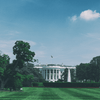
This President’s Day, we honor those presidents that have served both the people and the environment, which provides health and happiness to the citizens of the US. In addition, our nation has inspired others to form international agreements, laws and policies that protect lands, wildlife and species.
Our nation has an ever-evolving environmental tradition that recognizes the profound interdependence between human and environmental health. In spite of temporary setbacks, this should inspire hope for our future.

Abraham Lincoln (1861-1865)
President Lincoln is most well known for freeing slaves and for bringing about the end of the Civil War. Some of his lesser-known environmental accomplishments are also worthy of celebration this President’s Day. In 1864, he set aside the land of the Yosemite Valley and its Mariposa Grove, which later became one of the nations most beloved natural parks, as a public trust. This preserved the giant sequoias and stunning mountain faces for “public use, resort, and recreation” and inspired future leaders to create National Parks. He also created the U.S. Department of Agriculture (USDA) in 1862 and the National Academy of Sciences in 1863.

Ulysses S. Grant (1869–1877)
President Grant, our 18th president, served as a commander in the Civil War and he also fought in the Mexican-American War. Elected as a national hero, he played a crucial role in the Reconstruction Era, among many other accomplishments. As a forerunner to later conservation efforts, he created the first national park at Yellowstone in 1872. In his legislation, he included some protection for fish and game in the park, including buffalo, which neared extinction apart from a few herds within the park in the following years. He also made a precedent for wildlife protection by setting federal land aside specifically to protect the northern fur seal on the Alaska’s Pribilof Islands.

Theodore Roosevelt (1901–1909)
More than any other president, President Roosevelt influenced the nation to uphold respect for nature in both his words and actions. He led many land and wildlife conservation efforts and promoted the stewardship of natural resources. These actions came in response to the heavy logging, mining, and expansion underway. He established a total of five national parks, 18 national monuments, 50 wildlife refuges and 51 bird sanctuaries. He also fostered the management of forests to avoid rapid deforestation by creating the US Forest Service. With the Forest Reserve Act of 1891, he designated 150 million acres of timberland as national forests.

Woodrow Wilson (1913–1921)
Known for leading the United States through World War I and winning the Nobel Peace Prize for his diplomacy, President Wilson was a prestigious academic who upheld the values of peacekeeping and democracy. He also led the country to adopt progressive financial reforms by enacting the Clayton Antitrust Act and creating the Federal Trade Commission and the Federal Reserve System. His environmental legacy includes the establishment of the National Park Service in 1916, which still employs conservationists and park rangers across the nation in National Parks. In 1918, he also jointly signed the Migratory Bird Treaty Act with Canada, requiring permits for the trade of migratory birds.

Franklin D. Roosevelt (1933–1945)
President Roosevelt faced one of the nation’s most difficult environmental crises. The Dust Bowl during the Great Depression left farmers with barren land, causing them to migrate in search of work. To diminish the number of unemployed workers, he created the Civilian Conservation Corps (CCC) as part of the New Deal. It provided millions of workers conservation and resource management jobs on federally owned lands. Recognizing our dependence on soil health for agricultural productivity, Roosevelt made long term soil conservation a priority during his tenure in office. He created the Soil Conservation Service and the Federal Aid in Wildlife Restoration Act.

John F. Kennedy, Jr. (1961-1963)
We remember JFK for his civil rights achievements and for launching the first shuttle to land on the moon. However, president Kennedy also read Rachel Carson’s Silent Spring, detailing how agricultural pesticides use, such as DDT, led to dangerous consequences for birds and other species other than insects. This led president Kennedy to form a committee to investigate the impacts of pesticides on health and the environment, which found evidence of industrial malpractice that set the stage for the establishment of the Environmental Protection Agency (EPA).

Richard Nixon (1969–1974)
Though he is known best for his Watergate scandal, president Nixon led during a time of growing environmental awareness. He implemented many necessary environmental reform measures to guard the safety of the nation’s citizens as well as its public lands and waters. Public pressure for environmental reform had reached a boiling point. For instance, 20 million people participated in the nation’s first Earth Day in 1970.
In response, president Nixon created some of the strongest legal protections for the environment in our nation’s history. These included the establishment of the EPA, the Clean Air Act, the Clean Water Act, the Coastal Zone Management Act, the Ocean Dumping Act, the Marine Mammal Protection Act, the Endangered Species Act, and the Safe Drinking Water Act in the seventies.
Many of these laws created a ripple effect worldwide, as they were emulated by other nations. The Endangered Species Act is also directly responsible for the recovery of American bald eagles, sea turtles, and other species that have neared extinction.

Jimmy Carter (1977–1981)
Like TDR, president Carter used land conservation to protect the environment by creating 10 national parks and preserves, two national monuments, nine national wildlife refuges, two national conservation areas and 25 wild and scenic rivers. Seeing Alaska as an opportunity to further protect our nation’s untarnished lands, he created the Alaskan National Interest Lands Conservation Act, which stretched over 100 million acres.
President Carter also created the Department of Energy to explore clean, renewable energy alternatives foreshadowing our current energy transitions. He promoted energy efficiency and even installed solar panels on the white house roof. His other important environmental legislation includes the Soil and Water Conservation Act, the Surface Mining Control and Reclamation Act, the Antarctic Conservation Act, the Endangered American Wilderness Act and the Superfund Act, to fund the cleanup of toxic sites.

William J. Clinton (1992–2001)
Though he is responsible for vastly intensified fossil fuel oil extraction and failing to effectively act on climate change, president Clinton did continue a tradition of conservation. He declared 7.7 million acres of federal lands as wilderness and expanding many existing national parks, and declaring 17 new national monuments. He recognized that certain areas need more protection by increasing protections for wetlands and old growth forests, while also prohibiting road building on 60 million acres of wilderness.

Barack Obama (2009–2017)
President Obama joined the world in signing internationally recognized goals for carbon emissions reduction by signing the Paris Climate Agreement. In his efforts, he created a Clean Power Plan to limit carbon pollution, set standards for vehicle fuel efficiency, and invest in renewable energy sources. He also supported chemical safety by signing the Chemical Safety for the 21st Century Act.
As another conservationist president, he created the largest ever fully protected conservation areas in Hawaii which also includes marine protection. He preserved 260 million acres of land, more than any other president, including 19 monuments. He also created the RESTORE Act to protect the Gulf Coast.
Sources:
https://www.history.com
https://medium.com/wild-without-end/presidents-day-remembering-conservation-legacies-89caf1750da1
https://www.edf.org/blog/2017/01/12/ready-defend-obamas-environmental-legacy-top-10-accomplishments-focus
https://www.doi.gov/blog/theodore-roosevelts-legacy
http://nationswell.com/greenest-u-s-presidents/
https://www.goodhousekeeping.com/home/g1925/greenest-presidents-460808/?slide=11














